Verticillium Wilt
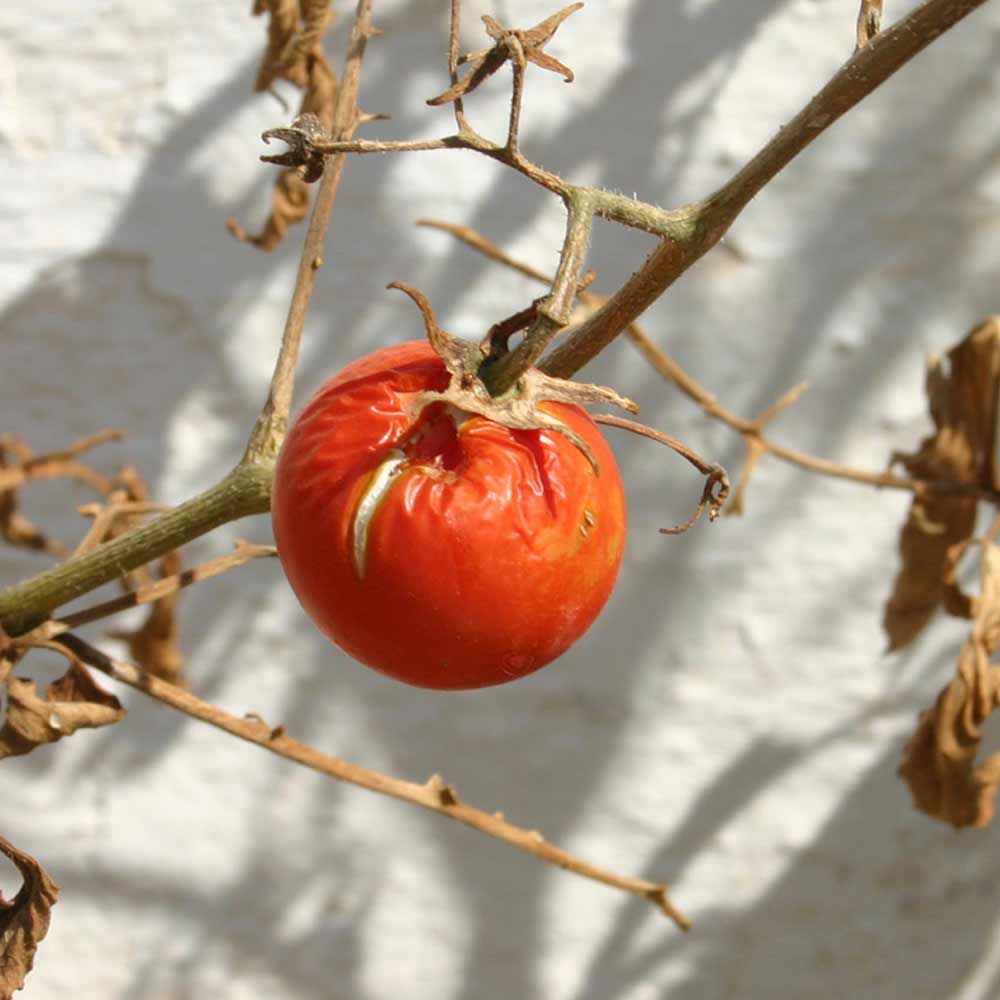

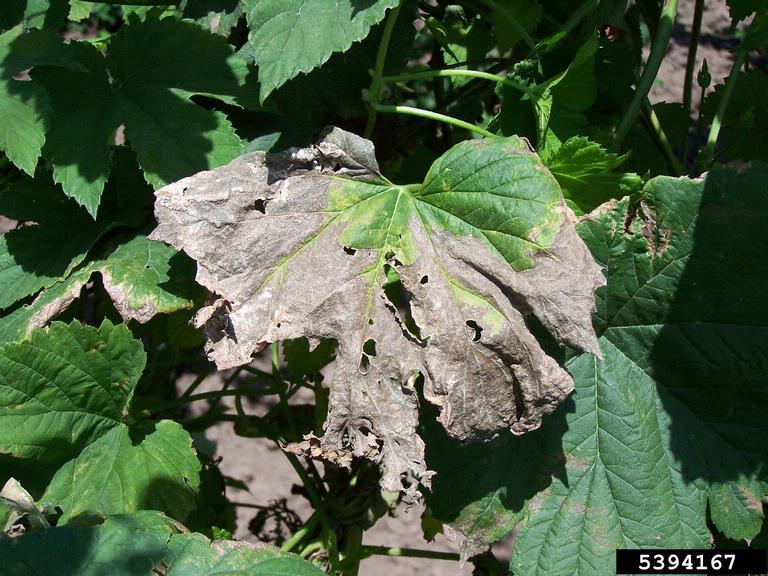
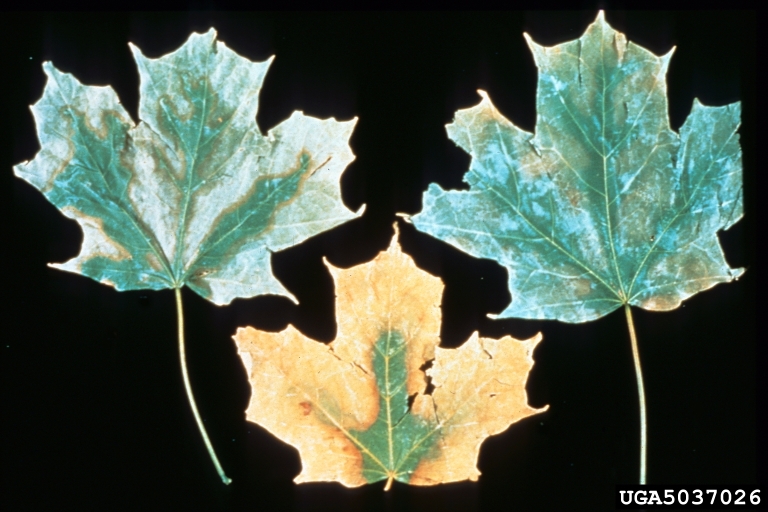

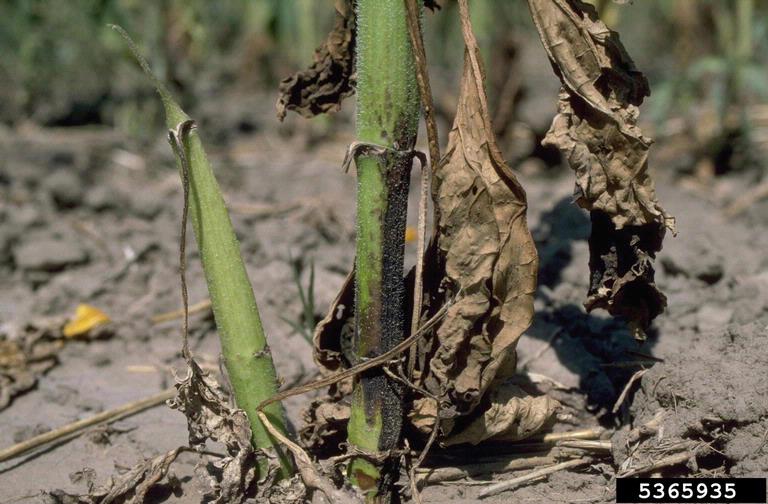
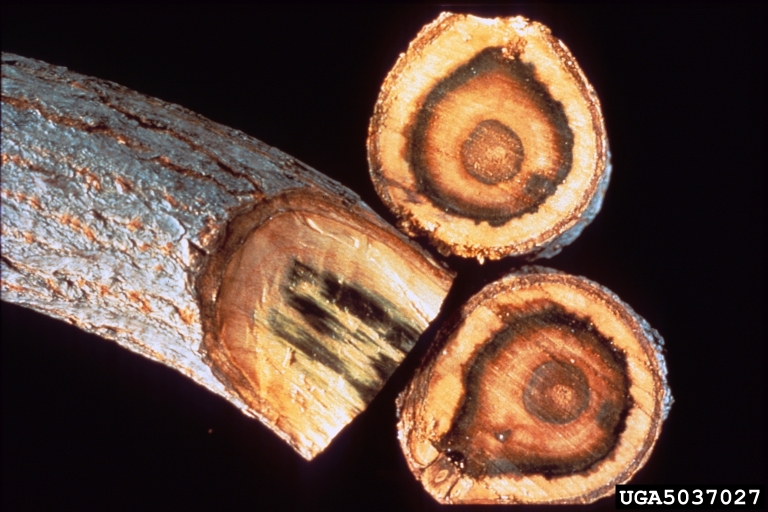
Verticillium wilt afflicts a wide range of plants, from sunflowers and tomatoes to hops, lilacs, and maple trees. Soil-borne fungi behind this disease invade plants through the roots. Then they plug the plant's water, nutrient, and sap pathways, causing wilting and premature death.
Cool spring temperatures encourage activity in the pathogens behind verticillium wilt, but symptoms typically don't show until late in the growing season. Some forms of the disease kill plants quickly, while others take their time. Infected trees, for example, may die the same season or decline gradually over many years.
Verticillium Wilt Identification/Symptoms: Plant leaves generally reveal the first hint of verticillium wilt infections. In infected tomatoes, yellowing starts with edges of the oldest, lowest leaves. Sometimes, though not always, symptoms show only on one side of the plant. With severe leaf damage and drop, fruit suffers sun damage.
In maples and similar landscape plants, a single large branch or stem may yellow and droop, then brown and die. Like fusarium wilt, verticillium wilt discolors the vascular system of affected plants near their base. If cut in half, stems may show green or brown streaks. In some cases, the outside of the stem, branch, or trunk becomes discolored, too.
How to Control Verticillium Wilt: There is no effective treatment for verticillium wilt. For affected vegetables, remove and dispose of the plant; don't compost it. For landscape plants, prune out affected branches and dispose of them immediately. Do not use infected wood for chips for landscape mulch. Careful attention to watering and other plant needs may help extend a plant's life as well.
The best protection against verticillium wilt is growing plants with resistance or immunity to the disease. Verticillium-resistant tomato varieties carry a "V" on the plant tags or labels. Birch trees naturally resist the disease, and verticillium wilt doesn't affect conifers such as pine and spruce trees.
Depending on where you live, you may be able to control verticillium wilt through professional soil fumigation or other means. In warm climates, plastic-covered soil may reach temperatures high enough to suppress the fungi at fault. Check with your local county extension agent about whether these practices might help control verticillium wilt in your area. They can help with recommendations for plant varieties, too.
Verticillium Wilt Tip: If verticillium wilt finds its way into your garden, it can linger in soil for many years. Avoid planting the same crop or related crops in affected areas for at least four years. If not, you may help prolong its stay.
Always read product labels thoroughly and follow instructions, including guidelines for treatable diseases and plants.
Photo Credit:
Howard F. Schwartz, Colorado State University, Bugwood.org (CC BY 3.0 US)
Howard F. Schwartz, Colorado State University, Bugwood.org (CC BY 3.0 US)
David Gent, USDA Agricultural Research Service, Bugwood.org (CC BY 3.0 US)
David Gent, USDA Agricultural Research Service, Bugwood.org (CC BY 3.0 US)
Joseph O'Brien, USDA Forest Service, Bugwood.org (CC BY 3.0 US)
USDA Forest Service - Northeastern Area, USDA Forest Service, Bugwood.org (CC BY 3.0 US)

